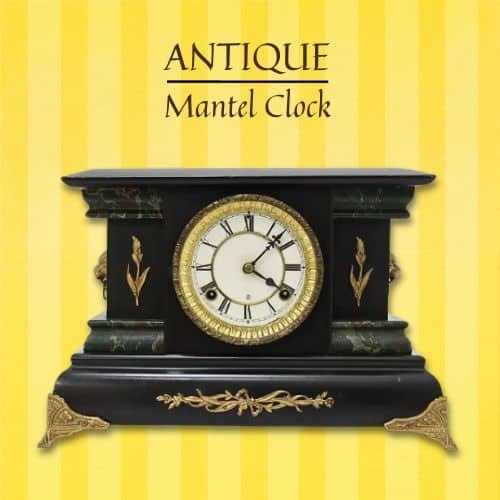A Journey Through Time: More Than Just Timepieces
When I first inherited my grandfather‘s 1872 Seth Thomas mantel clock, I didn‘t realize I was holding a portal to another era. This exquisite piece wasn‘t merely a timekeeping device—it was a narrative of craftsmanship, technological innovation, and human connection.
The Heartbeat of History
Imagine a world before digital displays and smartphone notifications. In the 17th and 18th centuries, a mantel clock was more than an accessory—it was the centerpiece of domestic life. Families would gather around these mechanical marvels, their intricate gears and delicate movements marking the rhythm of daily existence.
The Anatomy of Value: Understanding What Makes an Antique Mantel Clock Truly Special
Materials: The Foundation of Authenticity
Not all materials are created equal in the world of antique clocks. Brass, porcelain, and carefully crafted wood aren‘t just components—they‘re historical signatures. Each material tells a story of manufacturing techniques, regional resources, and artisan skills.
Take brass, for instance. During the Industrial Revolution, brass became more than a metal—it became a symbol of precision engineering. Clockmakers in cities like London and Paris transformed this malleable material into intricate mechanisms that could track time with unprecedented accuracy.
Mechanical Movements: The Soul of the Clock
The heart of any antique mantel clock lies in its movement mechanism. An anchor escapement isn‘t just a technical term—it‘s a testament to human ingenuity. Developed in the late 17th century, this mechanism represented a quantum leap in timekeeping technology.
When you hold an antique clock with an original anchor escapement, you‘re holding a piece of scientific history. These mechanisms were the smartphones of their era—cutting-edge technology that transformed how humans understood and measured time.
Decoding Value: A Collector‘s Intimate Perspective
Rarity: The Invisible Currency
Rarity isn‘t just about scarcity—it‘s about unique stories. A mantel clock from a small, now-defunct manufacturer might be worth exponentially more than a mass-produced model. It‘s not just about the clock; it‘s about the narrative behind its creation.
Consider the Brewster & Ingrahams company from Connecticut. Their limited production runs mean each clock carries a unique provenance. When you acquire such a piece, you‘re not just buying a timepiece—you‘re becoming a custodian of history.
Condition: The Delicate Balance
Preservation is an art form. A perfectly maintained clock isn‘t about pristine perfection but about respectful conservation. Minor signs of age—subtle patina, gentle wear—often increase a clock‘s value and authenticity.
Expert collectors understand that restoration is a nuanced process. Over-restoration can strip away the very character that makes an antique valuable. It‘s a delicate dance between maintaining functionality and preserving historical integrity.
The Economic Landscape of Antique Mantel Clocks
Market Dynamics: More Than Monetary Value
The antique clock market isn‘t static—it‘s a living, breathing ecosystem influenced by cultural trends, collector interests, and global economic shifts. What might be considered valuable today could change dramatically in a decade.
Regional variations play a significant role. A French porcelain mantel clock might command different prices in Paris versus New York, reflecting local aesthetic preferences and historical connections.
Investment Potential: Beyond Monetary Returns
While many view antique clocks as investments, true collectors understand their value transcends financial metrics. These are living historical artifacts that connect us to generations past.
Preservation: A Collector‘s Sacred Responsibility
Environmental Considerations
Preserving an antique mantel clock requires understanding its environmental sensitivities. Humidity, temperature fluctuations, and direct sunlight can cause irreparable damage.
A dedicated collector creates a microclimate for their treasures. It‘s not about hermetic preservation but creating a respectful environment that allows these mechanical marvels to continue their timeless journey.
The Human Connection: Why We Collect
Personal Narratives
Every collector has a story. For some, it‘s about family heritage. For others, it‘s an intellectual pursuit of understanding technological evolution. These clocks are more than objects—they‘re emotional touchstones.
My own journey began with my grandfather‘s clock—a reminder that collecting isn‘t just about acquisition. It‘s about understanding, respecting, and continuing a legacy of appreciation.
Conclusion: A Living Legacy
Antique mantel clocks represent more than mechanical precision. They are storytellers, technological marvels, and bridges connecting past and present.
As you explore this fascinating world, remember: every tick represents a moment of human creativity, innovation, and passion.
Disclaimer: Values and insights are based on current market research and expert observations. Individual clock valuations require professional appraisal.
